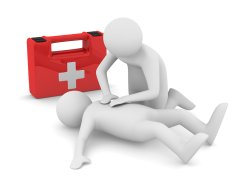 Having first aid training is undoubtedly one skill that everyone should learn and foster. Numerous health institutions offer classes that teach people basic first aid and cardiopulmonary resuscitation or CPR. Classes are either a few hours long that can be taken in one day or lasts for several sessions, depending on the level of training one wants to receive. But despite people’s good intentions to learn this skill, it’s easy to forget crucial points on how to perform CPR correctly. Here are the most common mistakes that people with CPR training should be mindful of.
Having first aid training is undoubtedly one skill that everyone should learn and foster. Numerous health institutions offer classes that teach people basic first aid and cardiopulmonary resuscitation or CPR. Classes are either a few hours long that can be taken in one day or lasts for several sessions, depending on the level of training one wants to receive. But despite people’s good intentions to learn this skill, it’s easy to forget crucial points on how to perform CPR correctly. Here are the most common mistakes that people with CPR training should be mindful of.
- Forgetting to Tilt the Head Back
One mistake that some people administering CPR sometimes make is forgetting to tilt the head back to make sure that the airway remains open. A person’s airway is constricted if the head is positioned towards the chest, making it difficult for air to flow into the lungs. The proper position of the head during CPR is propped and tilted slightly towards the person’s back. One way to ensure that the head is positioned correctly and that the airway is open is to check if the nose is pointing towards the ceiling or the sky.
- Forgetting to Count the Number of Compressions Out Loud
Counting out loud is important when doing chest compressions but it’s also something that people forget to do. This step is important because in the event that the emergency responder is too exhausted to continue with chest compressions, someone else can seamlessly take over. CPR is done in a fast and aggressive pace. Thirty chest compressions only take approximately 18 seconds, the two breaths that follow take about a second each and then the cycle begins again. The emergency responder relieving the other person should know the count so that when he or she jumps in, they know how many compressions are left before giving breaths. A mistake would mean oxygen levels going down and blood not reaching the necessary internal organs.
- Not Enough Pressure Used During Chest Compressions
During CPR courses, students are taught that when doing chest compressions, the responder pushes their full weight on the patient to make sure that the pressure goes deep enough and reaches the heart. One way to ensure that chest compressions are being done correctly is to watch and check if the chest rises considerably when a breath is pushed in. The responder should also remember to keep their hands steady and in place so rescue breaths and compressions can resume immediately. The CPR cycle shouldn’t stop until the patient exhibits some response or professional medical personnel arrive. Using an AED should be left to professionals.
CPR is undoubtedly one important way to keep someone alive. It’s a core skill that more and more people are learning. Training to get first aid certification is easier now as more government agencies and health institutions are offering it. If you’re interested in learning how to save lives, there are numerous St Mark James courses that you can take advantage of.
